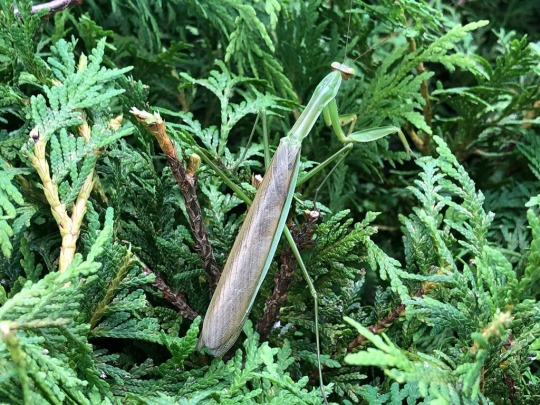#Class: Insecta
Text

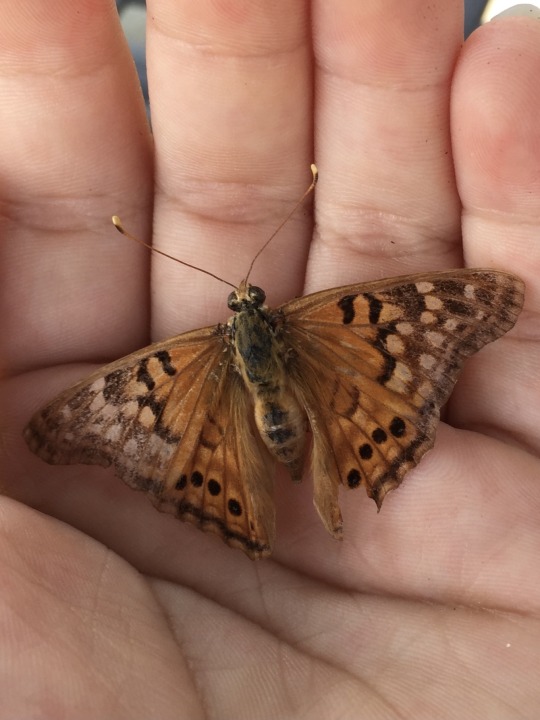
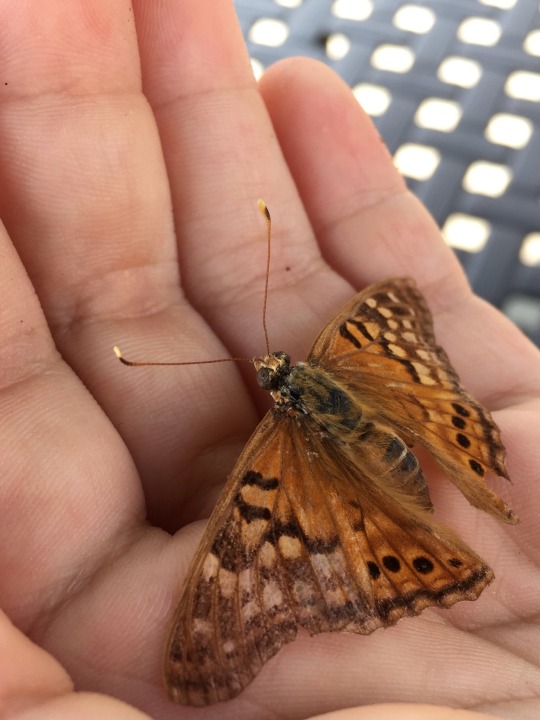
A Tawny Emperor!
#Phylum: Arthropoda#Class: Insecta#Order: Lepidoptera#Family: Nymphalidae#Genus: Asterocampa#Asterocampa clyton#tawny emperors#brush-footed butterflies#butterflies#bugs#insects
4 notes
·
View notes
Text



Work helper today
4 notes
·
View notes
Text
Mosquito-borne diseases Common Types
Mosquito-borne diseases Common Types
Diseases that are spread from mosquito to human are known as a mosquito-borne diseases. How? When a mosquito bites a human to suck blood for feeding, it also sucks any viruses or parasites living in that blood. These viruses and parasites can be transferred to other persons the mosquito bites. Pathogens are transferred through the saliva of the mosquito causing infections, which are classified as…

View On WordPress
0 notes
Note
I love the moth guy a lot. Such a cool design! He's a photographer, too? What a funky little guy. Do you have more to tell about him?

Patches is a large (about 1.6m long) sphinx moth descended from the family Sphingidae. He is based off of a combination of striped hawk moth and tersa sphinx moth and he is distantly related to both :)
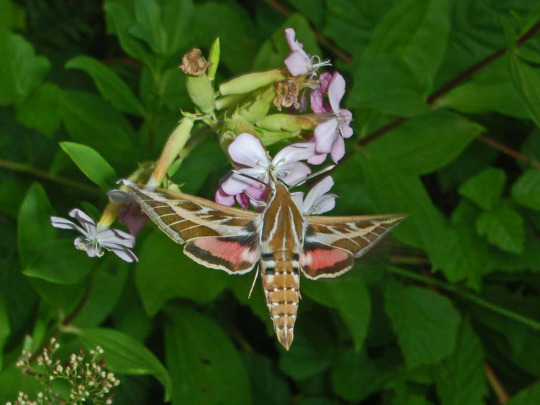
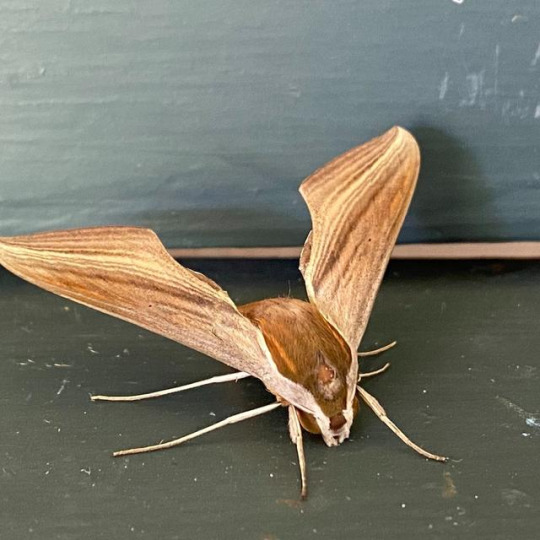
(source) (source)
I have to explain some of the setting - so every few million years, a mountain appears. It appears in the same spot on multiple different parallel dimensions, and it is there for maybe 45 years at a time. During this time is the only time these parallel worlds can touch, intersect, or meet one another. The last time this happened, members of the class Insecta came over, and found a different world with a ludicrously oxygen-rich atmosphere and some extremely energy-dense plants. They were able to develop, in the intervening years between then and the time of the story (think 1910s on earth) into the dominant life forms in this new world, many becoming quite large and developing complex societies and technology of their own.
The mountain reappears. This time, some of our insect characters (Nettle Rove [Staphylinidae] among them, though he is much younger than Patches and arrived at the tail-end of the time window) cross the mountain again, either by accident or on purpose, and find earth there, and human society. There's not enough oxygen there to fly or do much physical activity but they can still survive there and participate in a type of cultural exchange. So we have a First Contact type situation, but that's not what everyone really cares about. See, the humans have climbed the mountain and found at its peak, hidden in the clouds, a city. Completely devoid of life (even microbial), but obviously made by somebody. So the actual premise of the story is the exploration and mystery of this place.
Patches is 18 when the mountain shows up. He has just had a fulfilling caterpillar-hood of territorially murdering everyone he meets (kind of a solitary species! some members of Sphingidae will literally fight to the death if they meet as caterpillars) and, he is naturally extremely curious about the world outside His Tree. he meets his mate/bestie, Rosy Wing and while they do spend a lot of time terrorising everyone they meet, eventually they get interested in what's on the other side of that giant mountain. after meeting up with some humans trying to map the place, a camera-maker has a bright idea to send up Patches, who can hover very still in place, to photograph the strange lifeless city from the air (the humans are in full steampunk swing so obviously they have airships but atmospheric mixing between the different worlds makes it too dangerous to fly them, given that a stray breeze from the insect world might make a combustion engine blow the fuck up). the mixing is also sufficient to allow the insects to fly on the mountain but not for very long, meaning that most exploration of the city is on foot. The development of this aerial photography technique reveals that, from the air, the city appears disproportionately huge, and seems to stretch on for infinity. Because of this, and Patches' part in it all, an entire industry strings up for city exploration, and by Nettle Rove's time twenty years later, it has descended into bitter and violent rivalries between wealthy patrons funding expeditioneer teams. Murder is legal there (it's legal in insect world too. have u met insects? they love murder)
As for Patches himself, he is a barely-socialised semi feral freak with an incredibly upbeat and curious personality who is so so so devoted to Rosy Wing (who is.. similar, but more into people instead of cameras). Until their habit of harassing and thieving from randos goes poorly on a city expedition, and their entire team gets caught in a shootout. There were no recorded survivors. Our guy survived by playing dead but Rosy Wing was not so lucky. With Patches' hindwing in tatters, his only hope of being able to fly again and get of there was to use Rosy Wing's own hindwing as donor material. And that's how he got his name (he didn't have one before) :3
Rosy Wing was similar to an eyed hawk moth in appearance


(source)
In Nettle Rove's time, there is a persistent rumour of some weird old hermit in the city. These claims are dismissed, but something's out there drinking the blood of random expeditioneers, and that thing might know more about what lies at the heart of the city than anyone else...
okay thank you for reading love u
#yes he drinks blood (haemolymph) <3#i had to justify him surviving in areas with no giant flowers for years at a time/over winter without hibernating sooo#setting: thera
525 notes
·
View notes
Text
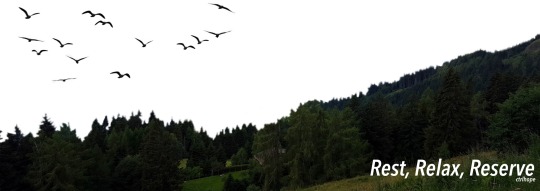

— Rest, Relax, Reserve ⊹ Series M.List
⭔ : Welcome in! Here at the Humbolt Insect Hybrid Conservation Park, we implore all of our guests to experience the wonderful world of hybrids living in their natural habitats! Feel free to interact with any hybrids that may approach you— however, please keep in mind that this is a no-touch park, these are wild animals after all. Please stay safe, stick to the trails, and enjoy your stay!
Please note: we are not responsible for any risks associated with entering our parks. Keep this in mind when exploring.

Information Board
⭔ : warning! most stories on this list are yandere-themed, meaning they may have elements of dark content in them. all have mature content within them as well. please read all warnings before reading each one!
⭔ : a/n! this series has spawned from my entomology class this semester! so enjoy a lot of useless facts about arthropods while falling in love with hybrid bts <33
⭔ : status! ongoing -> last update: The Pitfalls of Silk

Kim Seokjin
⊹ ׁ ݂┊ ⭔ species: blue morpho butterfly
⊹ ׁ ݂┊ ⭔ classification: arthropoda, insecta, lepidoptera
-> information this species not found! check back later?

Min Yoongi
⊹ ׁ ݂┊ ⭔ species: yellow fattail scorpion
⊹ ׁ ݂┊ ⭔ classification: arthropoda, arachnida, scorpiones
-> information this species not found! check back later?
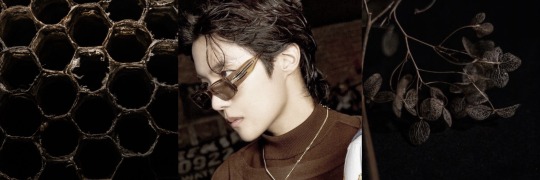
Jung Hoseok
⊹ ׁ ݂┊ ⭔ species: warrior wasp
⊹ ׁ ݂┊ ⭔ classification: arthropoda, insecta, hymenoptera
-> information this species not found! check back later?

Kim Namjoon
⊹ ׁ ݂┊ ⭔ species: honey bee
⊹ ׁ ݂┊ ⭔ classification: arthropoda, insecta, hymenoptera
-> information this species not found! check back later?

The Pitfalls of Silk ⊹ Park Jimin
⊹ ׁ ݂┊ ⭔ species: cobalt blue tarantula
⊹ ׁ ݂┊ ⭔ classification: arthropoda, arachnida, aranea
-> The winter gods are out to get you. That could be the only possible explanation for the series of bad luck tumbling before you— tropical vacation cancelled, snow locking you inside. Hell, even your shovel broken in half has got to be the gods playing some sort of trick on you. Pulling you along, making decisions for you as they guide you along the red string of fate. Guide you towards the very spider that found his way into your basement. Allowing him to fall into your heart all the same.

Kim Taehyung
⊹ ׁ ݂┊ ⭔ species: domestic silk moth
⊹ ׁ ݂┊ ⭔ classification: arthropoda, insecta, lepidoptera
-> coming soon . . .

Jeon Jungkook
⊹ ׁ ݂┊ ⭔ species: black garden ant
⊹ ׁ ݂┊ ⭔ classification: arthropoda, insecta, hymenoptera
-> information this species not found! check back later?

⭔ : consider buying me a kofi <3
⭔ : disclaimer: all members of bts are face and name claims for all works on this blog. the pieces on this blog are entirely fictional and are in no way meant to be a projection, judgment or representation of real-life people. any representations of the people and places mentioned in works are not representative of real-life scenarios.
© all rights reserved to ctrlhope 2019-2024 ; do not copy, plagiarise, or translate.

63 notes
·
View notes
Note
Hello
I hope you are having a pleasant day.
I have been interested in animal taxonomy for a while now and would like to spend more time working on it. Do you have any recommendations on sources, et cetera, that could guide me on how to start?
(I cannot figure out how to ask this anonymously, hope that is bot some sort of Tumblr faux pas)
Regards
I'm afraid I can't really recommend much as I don't own any books on the subject and I've learned the taxonomy I do know just by IDing bugs regularly and having to know the classes, orders, families, and genera that I see commonly. I primarily use iNaturalist for IDing and they organize everything there taxonomically which is hugely helpful.
Although even if there are good books on the subject, it's literally constantly changing, so they may become outdated very quickly.
I think if you want to get into it, it may be helpful to narrow your area of interest to at least a class (Insecta, Arachnida, Mammalia, Reptilia, etc) just so it's not such a huge undertaking.
Beyond that, maybe some of my followers have recommendations for resources?
P.S. - You can't ask anonymously because I have anonymous asks disabled to avoid rude messages. But this certainly wasn't any sort of faux pas!
144 notes
·
View notes
Text
October 15th, 2023

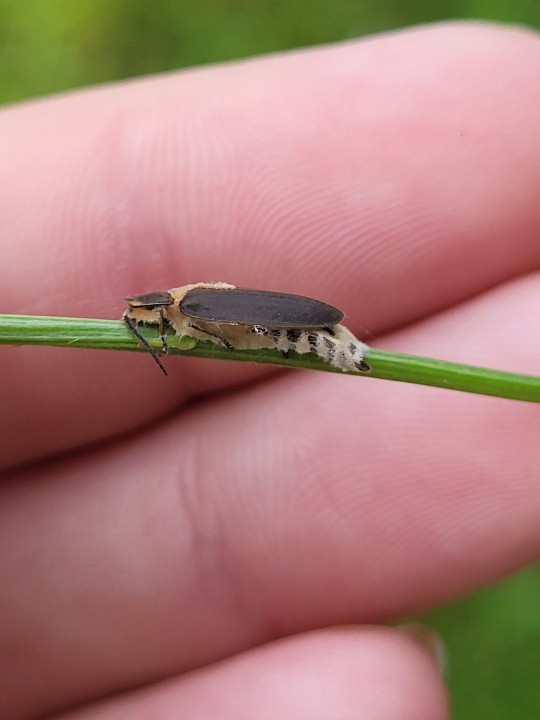

Winter Firefly (Ellychnia corrusca)
Class: Insecta
Distribution: North America; the United States, Mexico and Canada East of the Rockies.
Habitat: Variety of habitats; coniferous and deciduous forests, along bodies of water and salt marshes, in meadows, orchards and agricultural fields, yards and open parks.
Diet: Larvae are carnivorous, hunting soft-bodied invertebrates (like snails, slugs and earthworms) within decaying wood and leaf litter; adults have been observed feeding on the sap of maple trees, as well as on the nectar of maple, aster and goldenrod flowers.
Description: Unlike most other fireflies, the winter firefly is diurnal. For this reason, it does not have a lantern and doesn't glow at night. The eggs, larvae and pupae are all bioluminescent, but adults lose their glowing capabilities within hours of emerging.
The winter firefly gets its name from its amazing capacity to survive sub-zero temperatures as they overwinter as adults. As temperatures begin to fall, fireflies gather in the gaps and grooves of trees (and sometimes buildings, too!) where they can receive sunlight, remaining warm and protected from the elements. Because they remain semi-active during the winter instead of being dormant, winter fireflies can be spotted resuming their activities as early as February, if the weather is mild.
(First and second images by me, third by Katja Schulz)
89 notes
·
View notes
Text
would anyone happen to have an idea of what this is
15 notes
·
View notes
Note
hello! might i request some more palestinian fauna, specifically insects of palestine if you can find them? i wanna learn more about the creatures that live there in addition to the people
of course, i've posted some insects found in palestine for you. Worth noting though that many insect species are migratory and palestine borders other countries in central asia so none of these species are palestine exclusive!
I've taken insects to mean arthropods as a whole so i've included a centipede (as central asia has some fantastic centipedes!), but if you want specifically invertebrates in the class insecta send another ask and i'll post some more
here's my location tag for animals found in palestine
13 notes
·
View notes
Text
Why defining "birds" precisely is hard
(A reply to @lyxthen-reblogs that got too long and is now its own post)
A long time ago (in the 1700s), we didn't really have any idea of how birds came about - evolutionary theory itself would have to wait another century! And, we didn't have knowledge of extinct species either, or even of the fact extinction was a thing. Carl Linnaeus, when setting up the first taxonomical classification of life, grouped modern birds in the class Aves. Mammals were grouped in Mammalia, reptiles, amphibians and cartilaginous fish in Amphibia, bony fish in Pisces, arthropods in Insecta and all other animals in Vermes.
This first classification was pretty crude, and, around 1820, scientists like de Blainville and Latreille began distinguishing reptiles from "batrachians" as separate classes. De Blainville, pointing out similarities between reptiles and birds, labelled the former as "ornithoid" (bird-like) while amphibians were "ichthyoid" (fish-like). In 1825, Latreille fully separated amphibians (Batrachia, later Amphibia) from reptiles (Reptilia).
The first major turning point for taxonomy came in the next decades, as many fossils of now-extinct creatures were unearthed. In 1842, Richard Owen coined the term Dinosauria, then uniting the recently discovered Megalosaurus, Hylaeosaurus and Iguanodon.
But it wouldn't be until the 1860s that Darwinian evolution would highlight the flaws in the earlier understanding of separate classes. In 1863, Thomas Henry Huxley would suggest uniting birds and reptiles, creating the class Sauropsida the next year. Huxley was the first to suggest birds evolved from dinosaurs, comparing the recently-discovered Archaeopteryx (1861) with Compsognathus. As cladistics didn't exist back then, no attempt at precisely extending the definition of "bird" to extinct forms was made, even though Archaeopteryx was usually called "the first bird" (Urvogel).
Unfortunately, this hypothesis would be shelved for a whole century, leading to little progress happening in terms of understanding bird evolution. It wouldn't be until the 1960s and the Dinosaur Renaissance that the links between birds and dinosaurs would be rediscovered, with birdlike theropods like Deinonychus being unearthed. This would really accelerate with the discovery of extremely well-preserved feathered dinosaurs, starting with Sinosauropteryx in 1996.
With numerous fossils showing steps of a gradual dinosaur-to-bird transition, the question of defining the "first bird" came to be asked again. To try to answer this, Jacques Gauthier coined the clade Avialae in 1986 as all dinosaurs more closely related to modern birds than to deinonychosaurs. This included Archaeopteryx, which other authors used for an alternate definition of Avialae: "the smallest clade containing Archaeopteryx and modern birds".
Still, the conflict didn't end there. Fundamentally, there were many ways to extend Aves (as defined from modern birds) to past ancestors, and, in 2001, Gauthier and de Quieroz identified four. Avemetatarsalia, defined as any archosaur closer to birds than to crocodilians (including all dinosaurs and pterosaurs!). Avifilopluma, defined as any archosaur possessing feathers homologous to bird ones. Avialae, redefined as any dinosaur able to fly (and their flightless descendants). And finally, Aves or Neornithes, the crown-group (the last common ancestor of modern birds, and its descendants).
The issues were many. Avifilopluma became mostly useless as a definition as ornithischians, then pterosaurs, were found to possess filaments homologous with bird feathers. Virtually every bird-line archosaur (with the possible exception of the little-known aphanosaurs) could likely fit in this clade, and its content was too uncertain to be reliably used.
Meanwhile, Avialae had (and continues to have) three distinct definitions. Notably, the ability for flight itself proved to be a poor definition, as bird relatives (Maniraptora, including Deinonychus, Velociraptor, Oviraptor, and many other bird-like theropods) likely evolved flight several times, from the four-winged Microraptor to the bat-winged Yi qi. Truly, most maniraptorans were extremely bird-like: wings had evolved much earlier than flight itself, with even dinosaurs like Velociraptor sporting fully feathered wings despite being unable to fly.
So, what was left? The crown group Neornithes, a vaguely defined Avialae, a more extensive Maniraptora, the stem group Avemetatarsalia, and lots of confusion. Usually, Aves is taken today as referring to either Neornithes or Avialae, although Avifilopluma/Avimetatarsalia are also in use (for instance, the Sinosauropteryx discoverers used Avifilopluma, and considered it a bird).
But none of these definitions are inherently better or worse. They are all different ways of extending a definition made for modern creatures to have it apply to past ones.
50 notes
·
View notes
Text

A pair of bees from the genus Coelioxys. Bees from the genus are known to sleep upside down.
Bees from the genus Coelioxys are commonly known as leaf-cutting cuckoo bees or sharp-tailed bee. They are solitary bees known to steal foods from other bees. They also lay eggs on the nest of other bees.
Kingdom: Animalia
Phylum: Arthropoda
Class: Insecta
Order: Hymenoptera
Family: Megachilidae
Subfamily: Megachilinae
Genus: Coelioxys
Photographer: Dix Balino
Camera: Canon 77D
Location: Quezon City, Philippines
Det by Mohamed Shebl of Hymenopterist Forum
27 notes
·
View notes
Text

The western honey bee or European honey bee!!
#Phylum: Arthropoda#Class: Insecta#Order: Hymenoptera#Family: Apidae#Genus: Apis#Apis mellifera#western honey bees#honey bees#European bees#bees#insects
4 notes
·
View notes
Text
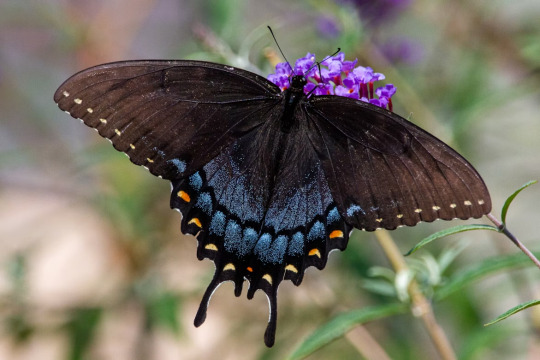
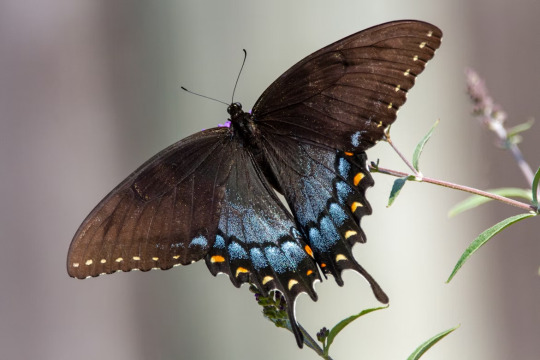
Eastern Tiger Swallowtail - Backyard, Cordova, Tennessee, USA
Joshua J. Cotten
Scientific name: Papilio glaucus
Family: Papilionidae
Class: Insecta
Order: Lepidoptera
Average size: 3.12 to 5.5 inches ufl.edu
Domain: Eukaryota
Genus: Papilio
Papilio glaucus, the eastern tiger swallowtail, is a species of butterfly native to eastern North America. It is one of the most familiar butterflies in the eastern United States, ranging north to southern Ontario, Canada, and is common in many different habitats.
#Backyard#Cordova#Tennessee#USA#US#Wildlife#TNWildlife#United States#United States of America#North America#Butterfly#Butterflies#Papilio glaucus#Papilionidae#Insecta#Lepidoptera#Eukaryota#Papilio
5 notes
·
View notes
Note
i love that bugrey is a pill bug, which are in the phylum arthropoda but not the class insecta like the others. idk if you intentionally did that but i love it because he is different from the others fr fr. pill bugs are malacostraca which is the same class as stuff like hermit crabs and shrimp. thnx for your time i wanna eat ur art.
yessssssss yesssssssss you understand. >:))))))
His “Its ok, I’m not human” line in act 1 would translate to “I’m not an insect” in this au. And his final boss form is a giant deep sea isopod. My boy is a freak.
48 notes
·
View notes
Note
so on a scale of "that's a stupid question" to "could not be any closer to the class insecta" how bugs is slugcat

I offer you the 75 kilogram slugcat that came to me in a dream! (Featuring @thetroupemaster )
Tbh id put them as like bug adjacent? This is my ‘bug blog’ so they’re definitely like. Some sort of creature. They’re abt the size of iterators so they’re like 4-5 feet tall, give or take. They’re not Bug Bugs like bug fables. They’re not like hk bugs either but they’re called Slugcat so. Idk they’re strange creatures to me
I also don’t know much (if anything) about slugs so
11 notes
·
View notes
